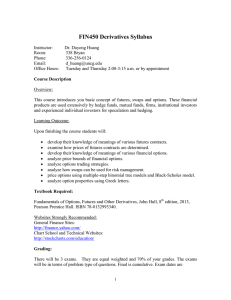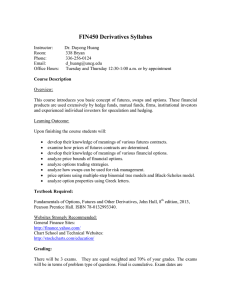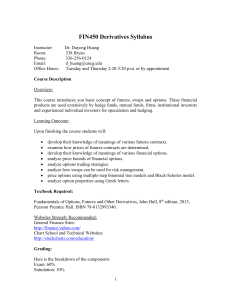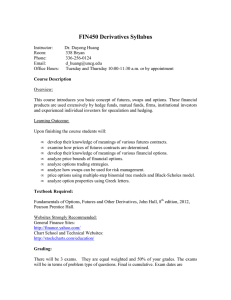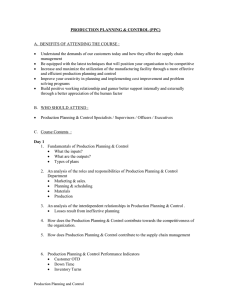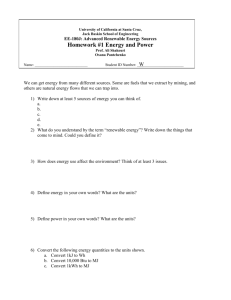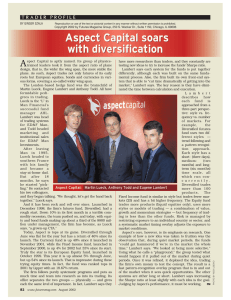July 16, 2010 DIVERSIFIED PROGRAM MONTHLY COMMENTARY – JULY 2010
advertisement
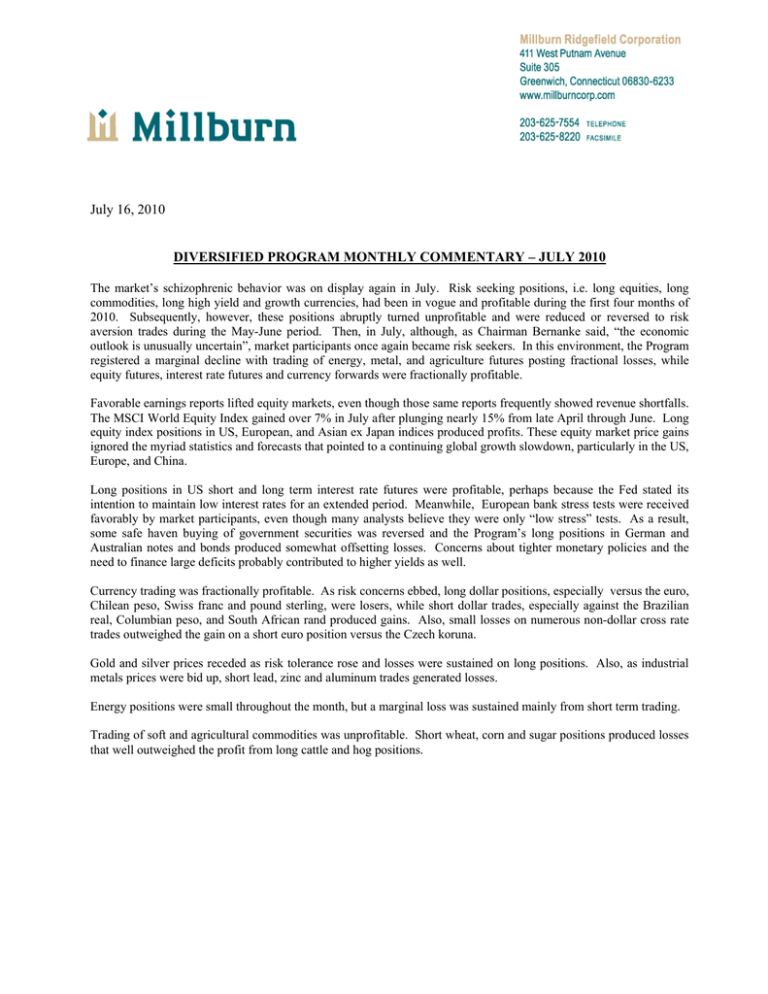
July 16, 2010 DIVERSIFIED PROGRAM MONTHLY COMMENTARY – JULY 2010 The market’s schizophrenic behavior was on display again in July. Risk seeking positions, i.e. long equities, long commodities, long high yield and growth currencies, had been in vogue and profitable during the first four months of 2010. Subsequently, however, these positions abruptly turned unprofitable and were reduced or reversed to risk aversion trades during the May-June period. Then, in July, although, as Chairman Bernanke said, “the economic outlook is unusually uncertain”, market participants once again became risk seekers. In this environment, the Program registered a marginal decline with trading of energy, metal, and agriculture futures posting fractional losses, while equity futures, interest rate futures and currency forwards were fractionally profitable. Favorable earnings reports lifted equity markets, even though those same reports frequently showed revenue shortfalls. The MSCI World Equity Index gained over 7% in July after plunging nearly 15% from late April through June. Long equity index positions in US, European, and Asian ex Japan indices produced profits. These equity market price gains ignored the myriad statistics and forecasts that pointed to a continuing global growth slowdown, particularly in the US, Europe, and China. Long positions in US short and long term interest rate futures were profitable, perhaps because the Fed stated its intention to maintain low interest rates for an extended period. Meanwhile, European bank stress tests were received favorably by market participants, even though many analysts believe they were only “low stress” tests. As a result, some safe haven buying of government securities was reversed and the Program’s long positions in German and Australian notes and bonds produced somewhat offsetting losses. Concerns about tighter monetary policies and the need to finance large deficits probably contributed to higher yields as well. Currency trading was fractionally profitable. As risk concerns ebbed, long dollar positions, especially versus the euro, Chilean peso, Swiss franc and pound sterling, were losers, while short dollar trades, especially against the Brazilian real, Columbian peso, and South African rand produced gains. Also, small losses on numerous non-dollar cross rate trades outweighed the gain on a short euro position versus the Czech koruna. Gold and silver prices receded as risk tolerance rose and losses were sustained on long positions. Also, as industrial metals prices were bid up, short lead, zinc and aluminum trades generated losses. Energy positions were small throughout the month, but a marginal loss was sustained mainly from short term trading. Trading of soft and agricultural commodities was unprofitable. Short wheat, corn and sugar positions produced losses that well outweighed the profit from long cattle and hog positions.
